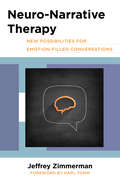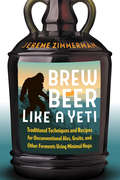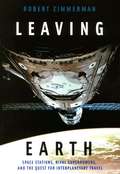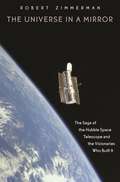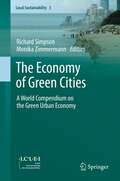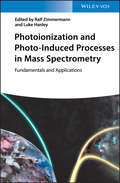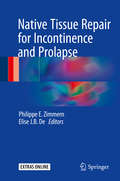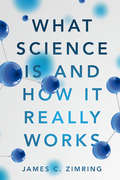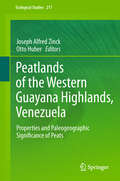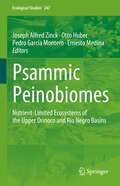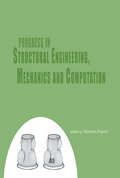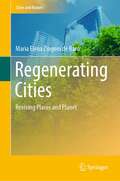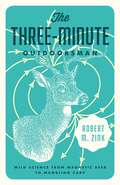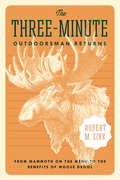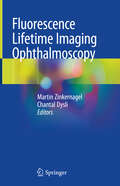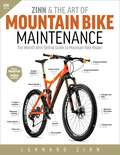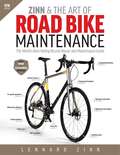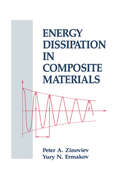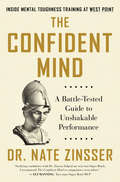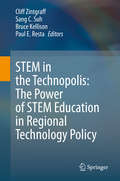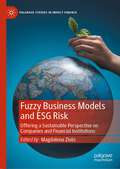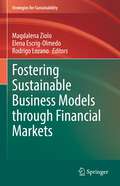- Table View
- List View
Neuro-Narrative Therapy: New Possibilities For Emotion-filled Conversations
by Jeffrey ZimmermanBringing interpersonal neurobiology and narrative therapy together. Narrative therapy understands storytelling as the way we make sense of ourselves and life experience. Many non-narrative therapists have expressed great admiration and interests in the politics the work exposes, the way it brings in the socio-political context, and the way it centers clients. Yet despite its popularity and success as a useful therapeutic approach, Narrative Therapy has been criticized as minimizing and failing to develop any extended discussion of something vital to our lives: emotion. Neuro-Narrative Therapy attempts to redress this problem by taking us first through standard Narrative practices, and then showing how and where affect can be brought in and even privileged in the work. After situating the evolution of Narrative Therapy in its historical context, the book provides information about why emotions should be given an important place in the work. Specifically, it brings ideas and implications of some of the most exciting and novel theories—interpersonal neurobiology and affective neuroscience—to the practice of Narrative Therapy. Readers will learn about the growing emphasis on the right brain, and how an understanding of the ways in which emotion and affect are manifested by the brain can help us help our clients. The possibilities for this new approach are many: a freer discussion of the emotional side of your clients; an understanding and sensitivity to the relation of body and mind; attention to how the therapeutic relationship of our clients can become a resource in treatment and a renewed understanding of how our memories—and thus our stories about our lives—develop in early childhood and beyond. For any therapist working in the area of Narrative Therapy, and for any interested in the emerging understandings that science is bringing to appreciating how our brains develop with and among each other, this book has something to offer. Combining the neuro- and the narrative, as Jeffrey Zimmerman has done here, will create a new direction in Narrative Therapy, one in which our brain and body work together, inviting a more direct and effective engagement with clients.
Brew Beer Like a Yeti: Traditional Techniques, Recipes, And Inspiration For Unconventional Ales, Gruits, And More
by Jereme ZimmermanExperimentation, mystery, resourcefulness, and above all, fun--these are the hallmarks of brewing beer like a Yeti. <P><P> Since the craft beer and homebrewing boom of the late twentieth and early twenty-first centuries, beer lovers have enjoyed drinking and brewing a vast array of beer styles. However, most are brewed to accentuate a single ingredient--hops--and few contain the myriad herbs and spices that were standard in beer and gruit recipes from medieval times back to ancient people's discovery that grain could be malted and fermented into beer. <P><P> Like his first book, Make Mead Like a Viking, Jereme Zimmerman's Brew Beer Like a Yeti returns to ancient practices and ingredients and brings storytelling, mysticism, and folklore back to the brewing process, including a broad range of ales, gruits, bragots, and other styles that have undeservingly taken a backseat to the IPA. Recipes inspired by traditions around the globe include sahti, gotlandsdricka, oak bark and mushroom ale, wassail, pawpaw wheat, chicha de muko, and even Neolithic "stone" beers. <P><P> More importantly, under the guidance of "the world's only peace-loving, green-living Appalachian Yeti Viking," readers will learn about the many ways to go beyond the pale ale, utilizing alternatives to standard grains, hops, and commercial yeasts to defy the strictures of style and design their own brews.
Leaving Earth: Space Stations, Rival Superpowers, And The Quest For Interplanetary Travel
by Robert ZimmermanCharged with the ever-present potential for danger and occasionally punctuated by terrible moments of disaster, the history of space exploration has been keenly dramatic. The recent disaster of the Space Shuttle Columbia was a sad but certain reminder that space travel is an extraordinarily dangerous occupation. Oddly enough, it often takes a tragic accident to remind us that we still have a presence in space. In the decades between triumph and tragedy we tend to ignore the fact that there have been scores of space pioneers who have risked their lives to explore our solar system. Indeed, the International Space Station is sometimes referred to as “Alpha,” a moniker that implies that it is our first real permanent presence in space. But this notion is frowned upon by the Russians – and for good reason. Prior to the construction of the controversial International Space Station, a host of daring Russian cosmonauts, and a smaller number of intrepid American astronauts, were living in space for months, some of them for over a year. In this definitive account of man’s quest to become citizens of the cosmos, noted space historian Robert Zimmerman reveals the great global gamesmanship between Russian and American political leaders that drove us to the stars. Beaten to the Moon by their Cold War enemies, the Russians were intent on being first to the planets. They believed that manned space stations held the greatest promise for reaching other worlds and worked feverishly to build a viable space station program – one that would dwarf American efforts and allow the Russians to claim the vast territories of space as their own. Although unthinkable at the time, the ponderously bureaucratic Soviet Union actually managed to overtake the United States in the space station race. Leveraging their propaganda machine and tyrannical politics to launch a series of daring, dangerous, and scientifically brilliant space exploits, their efforts not only put them far ahead of NASA, they also helped to reshape their own society, transforming it from dictatorship to democracy. At the same time, the American space program at NASA was also evolving, but not necessarily for the better. In fact, the two programs were slowly but inexorably trading places. Drawing on his vast store of knowledge about space travel, as well as hundreds of interviews with cosmonauts, astronauts, and scientists, Zimmerman has superbly captured the excitement and suspense of our recent space-traveling past. For space and history enthusiasts alike, Leaving Earth describes a rich heritage of adventure, exploration, research, and discovery.
The Universe in a Mirror: The Saga of the Hubble Space Telescope and the Visionaries Who Built It
by Robert ZimmermanThe Hubble Space Telescope has produced the most stunning images of the cosmos humanity has ever seen. It has transformed our understanding of the universe around us, revealing new information about its age and evolution, the life cycle of stars, and the very existence of black holes, among other startling discoveries. But it took an amazing amount of work and perseverance to get the first space telescope up and running. The Universe in a Mirror tells the story of this telescope and the visionaries responsible for its extraordinary accomplishments. Robert Zimmerman takes readers behind the scenes of one of the most ambitious scientific instruments ever sent into space. After World War II, astronomer Lyman Spitzer and a handful of scientists waged a fifty-year struggle to build the first space telescope capable of seeing beyond Earth's atmospheric veil. Zimmerman shows how many of the telescope's advocates sacrificed careers and family to get it launched, and how others devoted their lives to Hubble only to have their hopes and reputations shattered when its mirror was found to be flawed. This is the story of an idea that would not die--and of the dauntless human spirit. Illustrated with striking color images, The Universe in a Mirror describes the heated battles between scientists and bureaucrats, the perseverance of astronauts to repair and maintain the telescope, and much more. Hubble, and the men and women behind it, opened a rare window onto the universe, dazzling humanity with sights never before seen. This book tells their remarkable story. A new afterword updates the reader on the May 2009 Hubble service mission and looks to the future of astronomy, including the prospect of a new space telescope to replace Hubble.
The Economy of Green Cities: A World Compendium on the Green Urban Economy
by Monika Zimmermann Richard SimpsonThis volume bridges the gap between the global promotion of the Green Economy and the manifestation of this new development strategy at the urban level. Green cities are an imperative solution, not only in meeting global environmental challenges but also in helping to ensure socio-economic prosperity at the local level.
Photoionization and Photo-Induced Processes in Mass Spectrometry: Fundamentals and Applications
by Ralf ZimmermannProvides comprehensive coverage of laser-induced ionization processes for mass spectrometry analysis Drawing on the expertise of the leading academic and industrial research groups involved in the development of photoionization methods for mass spectrometry, this reference for analytical scientists covers both the theory and current applications of photo-induced ionization processes. It places widely used techniques such as MALDI side by side with more specialist approaches such as REMPI and RIMS, and discusses leading edge developments in ultrashort laser pulse desorption, to give readers a complete picture of the state of the technology. Photoionization and Photo-Induced Processes in Mass Spectrometry: Fundamentals and Applications starts with a complete overview of the fundamentals of the technique, covering the basics of the gas phase ionization as well as those of laser desorption and ablation, pulse photoionization, and single particle ionization. Numerous application examples from different analytical fields are described that showcase the power and the wide scope of photo ionization in mass spectrometry. -The first general reference book on photoionization techniques for mass spectrometry -Examines technologies and applications of gas phase resonance-enhanced multiphoton ionization mass spectrometry (REMPI-MS) and gas phase resonance ionization mass spectrometry (RIMS) -Provides complete coverage of popular techniques like MALDI -Discusses the current and potential applications of each technology, focusing on process and environmental analysis Photoionization and Photo-Induced Processes in Mass Spectrometry: Fundamentals and Applications is an excellent book for spectroscopists, analytical chemists, photochemists, physical chemists, and laser specialists.
Der Klimaschutzdiskurs der „Neuen Rechten“: Eine ideengeschichtliche Analyse des Periodikums Die Kehre – Zeitschrift für Naturschutz (BestMasters)
by Wiebke ZimmermannUmwelt- wie auch konkret der Klimaschutz als dessen jüngerer Teilbereich sind weder neutrale Sachthemen noch notwendigerweise politisch links zu verorten. Im historischen Rückblick lassen sich Momente der geglückten wie gescheiterten Verquickung nationalistischer und antidemokratischer Positionen mit „grünen“ Forderungen im gesellschaftspolitischen Diskurs ausmachen. Auch im Lichte des gegenwärtigen Relevanzgewinns der Causa Klimawandel regen sich im neurechten Lager erneut die Versuche einer (Rück-)Eroberung der Diskurshoheit. Paradigmatisch hierfür steht das neurechte Periodikum Die Kehre – Zeitschrift für Naturschutz, das sich als Debattenort zur Etablierung einer „konservativen Ökologie“, der Verbindung von Ökologie mit rechtsideologischen Elementen, ins Werk setzt. Welche Positionen beziehen, welche Begründungzusammenhänge formulieren Akteur*innen der „Neuen Rechten“ zum Klimaschutz? Die vorliegende Arbeit rekonstruiert Amalgamierungsmomente neurechter (Vorläufer-)Gruppierungen mit Themen des Umweltschutzes und systematisiert so die Chronologie der Genese der „Neuen Rechten“ in einem umweltethischen Zusammenhang. Auf diesem Fundament wird eine Tiefenanalyse der klimaschutzpolitischen Argumentationen innerhalb des neurechten Periodikums Die Kehre geleistet, die identifizierten Positionen werden hinsichtlich ihrer inhaltlichen und strukturellen Brücken in neurechte Traditions- und Ideologiebestände kontextualisiert und interpretiert.
Native Tissue Repair for Incontinence and Prolapse
by Philippe E. Zimmern Elise J. B. DeThis book demonstrates knowledge on tissue-based procedures for stress urinary incontinence and other pelvic floor related topics. As the field shifts away from using synthetic material for repair, this work presents a new perspective on native tissue repair from the opinions and research of the authors. Written by a panel of expert authors in the field, this text provides high quality, focused information that is complimented by illustrations and videos. With established track records the authors illustrate how to perform the procedure vaginally or through open surgery, and inclusion of live surgeries via online video, makes this an invaluable tool for busy surgeons and specialists interested in pelvic floor reconstruction.
What Science Is and How It Really Works
by James C. ZimringScientific advances have transformed the world. However, science can sometimes get things wrong, and at times, disastrously so. Understanding the basis for scientific claims and judging how much confidence we should place in them is essential for individual choice, societal debates, and development of public policy and laws. We must ask: what is the basis of scientific claims? How much confidence should we put in them? What is defined as science and what is not? This book synthesizes a working definition of science and its properties, as explained through the eyes of a practicing scientist, by integrating advances from philosophy, psychology, history, sociology, and anthropology into a holistic view. Crucial in our political climate, the book fights the myths of science often portrayed to the public. Written for a general audience, it also enables students to better grasp methodologies and helps professional scientists to articulate what they do and why.
Decarbonization of Maritime Transport (Energy, Environment, and Sustainability)
by Burak Zincir Pravesh Chandra Shukla Avinash Kumar AgarwalThis contributed book focuses on decarbonization of maritime transport by highlighting different aspects of decarbonization methods indicated in the International Maritime Organization’s Initial Greenhouse Gas Strategy (2018). The book contains studies on alternative fuels and alternative energy systems with their life cycle assessment, electrification and hybridization of ships, carbon capture technologies, green port concept, energy efficiency management, and market-based measures. This book will be of interest to those working in academia and industry in maritime technologies and transportation.
Peatlands of the Western Guayana Highlands, Venezuela
by Joseph Alfred Zinck Otto HuberThe Guayana Highlands in northeastern tropical America, rising from lowland rain forests and savannas up to 3000 m elevation, are characterized by ancient tablelands called tepuis. The peatlands that developed on the tepuis constitute unique and fascinating ecosystems and are the focus of this volume, which starts with an overview of tropical and subtropical peats, followed by an introduction to the geo-ecological features of the Guayana region as a whole, with special emphasis on the diversity of the vegetation cover from lowlands to uplands to highlands. The core subject centers on the properties and dating of the peat deposits and the interpretation of the chronological record in terms of past environmental changes. The well illustrated book will appeal to a broad range of scientists interested in tropical highland peats, including quaternarists, soil scientists, geomorphologists, geographers, geologists, ecologists, botanists, hydrologists, conservationists, and land use planners.
Psammic Peinobiomes: Nutrient-Limited Ecosystems of the Upper Orinoco and Rio Negro Basins (Ecological Studies #247)
by Joseph Alfred Zinck Otto Huber Pedro García Montero Ernesto MedinaThe book represents a multidisciplinary approach to understanding soil–landscape–vegetation relationships and, specifically, the ecophysiology of plant communities developing on sandy soils of very low fertility that are subject to seasonal flooding. It provides an overview of the white sand ecosystems within the Amazon basin, and focuses on the forest and herbaceous (meadows) vegetation growing on the dystrophic sandy soils of the upper Negro and Orinoco river basins. Several chapters describe physiographic aspects of the study area using integrated remote sensing and in situ sampling. By doing so they attain a comprehensive description of the origin and evolution of soils and landscapes, an advanced classification of soils, and a mapping of the geographic distribution of psammophilous vegetation. This volume also provides a phytosociological classification of extensive forested areas, and a detailed description of the structure and diversity of little-known herbaceous formations.It targets professionals in the fields of ecology, ecophysiology, geomorphology, soils, vegetation, and the environmental sciences. The information it offers may be of significant use to researchers, protected area planners, and environmental policy makers.
Progress in Structural Engineering, Mechanics and Computation: Proceedings of the Second International Conference on Structural Engineering, Mechanics and Computation, Cape Town, South Africa, 5-7 July 2004
by Alphose ZingoniThe Second International Conference on Structural Engineering Mechanics and Computation was held in Cape Town, South Africa in 2004. Its mission was 'To review and share the latest developments, and address the challenges that the present and the future pose'.This book contains its key findings with contributions from academics, researchers and pra
Regenerating Cities: Reviving Places and Planet (Cities and Nature)
by Maria Elena Zingoni de BaroThis book sets out the discussion on how cities can contribute solutions to some of the challenges the urbanised world is facing, such as the pressure of growing populations, mitigation of effects of, and adaptation to globally changing environmental, climate and public health conditions. Presenting a detailed explanation of the causes behind the current state of modern cities, the book advocates for a paradigm shift to improve the quality of life of ever-increasing urban inhabitants whilst nourishing the natural systems that sustain human and non-human life in the planet. Recognising the precious role that nature plays in the functioning of cities, it delves into the study of biophilic design and regenerative development. The book argues that these social-ecological design approaches can act as catalysts to develop conditions in urban settings that are beneficial for natural and human systems to thrive and flourish, both in ecosystem services and social-cultural systems. This is particularly relevant for the design of new quality precincts or the regeneration of degraded urban spaces to promote health, wellbeing and urban resilience. A framework is proposed to guide the process of thinking about, designing and building healthier, more liveable and resilient urban environments that raise the quality of life in cities. The method can be used by researchers, practitioners -urban designers, urban planners, architects and landscape architects- interested in developing their work within a social-ecological perspective. It can also be used by local governments and agencies to underpin policy making, and by educational institutions to prepare graduates with necessary skills to respond to current and future built environment challenges.
Cyanobacteria for Bioremediation of Wastewaters
by Inga Zinicovscaia Liliana CepoiThis book reflects the use of cyanobacteria for the bioremediation of wastewater through different mechanisms and pathways of transformation and transfer of hazardous substances from one medium to another. The application of microorganisms for bioremediation is determined by their ubiquity, small size, high rate of reproduction and large surface-to-volume cell ratio. Mechanisms of interaction of cyanobacteria with inorganic pollutants include biosorption, bioaccumulation with an opportunity to obtain metal nanoparticles both on the cell surface and inside the cells as well as chelation and inclusion of metals in the composition of certain organic structures. Data presented in the book provides specialists in the field with useful information for bioremediation technologies as well as for obtaining valuable preparations using cyanobacteria.
The Three-Minute Outdoorsman
by Robert M. ZinkThere are days when, if we hunt or fish or watch birds, we just want to be alone with our thoughts. Other times, however, contemplating the great outdoors that contains so many unknowns, we may wish to learn about moaning moose . . . or mumbling carp . . . or magnetic deer. And this is where Robert M. Zink enters the scene. A writer who humorously bridges the gap between esoteric information and nature as we have come to know it, Zink distills the latest news from the world of science into three-minute bursts of irresistible lore for the layman. In these brief, engaging essays readers will discover, for instance, how deer use the earth's magnetic field for orientation; a long-gone tradition of hunting loons in North Carolina; how porcupine quills are advancing new ideas about delivering inoculations; and why deer antlers can model bone regeneration for amputees. How do predator-prey cycles get started? Should we worry about black bear attacks in the woods? Zink has the answers--often to questions we didn't think to ask but wish we had. This is the outdoors at its mysterious best, as the experience of nature and the findings of science combine to educate our sense of wonder and tickle our fancy--to say nothing of our highly unscientific funny bone.
The Three-Minute Outdoorsman Returns: From Mammoth on the Menu to the Benefits of Moose Drool
by Robert M. ZinkSpending time in nature can raise some serious questions. After contemplating your own mortality, you may start to wonder: Why don’t deer noses freeze in the winter? What does mammoth taste like? Do fish feel pain? These are important questions, and Robert M. Zink has the answers. Bringing together the common and the enigmatic, The Three-Minute Outdoorsman Returns includes over seventy three-minute essays in which Zink responds to the queries that have yet to cross your mind. Drawing on his zoological background, Zink condenses the latest scientific discoveries and delivers useful, entertaining information on the great outdoors. Can a sheep’s horns be too big? Was the Labrador duck a hybrid? Why did I miss that clay target? A large section on deer covers topics ranging from deer birth control backfiring, new information on Chronic Wasting Disease, supplemental feeding, and deer genetics. Other essays explore land, aquatic animals, and humanity’s relationship with nature, thus making this book of wild science an essential for any outdoors person.
Fluorescence Lifetime Imaging Ophthalmoscopy
by Martin Zinkernagel Chantal DysliThis book focuses on the emerging non-invasive imaging technique of Fluorescence Lifetime Imaging Ophthalmoscopy (FLIO). FLIO reveals unique information on retinal diseases, ranging from age-related macular degeneration and vascular diseases to hereditary retinal dystrophies. Fluorescence lifetimes enable the evaluation of disease progression before irreversible structural changes occur. The image acquisition is suitable for diagnostic purposes and follow-up examinations to investigate the natural course of disease, and to monitor the effects of possible therapies. This book fills the gap between available literature and gives state-of-the-art guidance on the principles of the FLIO technique, image acquisition, and data analysis. Written by a team of expert leaders within this field, this book will be relevant for scientists and clinicians with an interest in ophthalmoscopy.
Zinn & the Art of Mountain Bike Maintenance: The World's Best-Selling Guide to Mountain Bike Repair
by Lennard ZinnZinn & the Art of Mountain Bike Maintenance is the world&’s best-selling guide to the maintenance and repair of mountain bikes, hybrids, and fat bikes.From basic repairs like how to fix a flat to advanced overhauls of drivetrains and brakes, Lennard Zinn&’s clearly illustrated guide makes every bike repair and maintenance job easy for everyone. Lennard Zinn is the world&’s leading expert on bike maintenance and repair. His friendly, step-by-step guide explains the tools and parts you&’ll need and how to know you&’ve done the job right. The book&’s interior is easy to read, even in a dimly-lit garage or workshop. Hundreds of hand-drawn illustrations and exploded-parts diagrams show just the right level of detail to lead you through every mountain bike repair task. This smartly organized guide shows how to repair new and old mountain bikes from top to bottom. In over 500 pages and more than 750 illustrations, Zinn&’s guide includes simple instructions for hundreds of mountain bike maintenance and repair jobs: Basics: How to fix a flat tire, lube a bicycle chain, adjust the brakes Emergency repairs: How to fix a broken chain, tighten loose spokes, repair a bent derailleur Easy shifting: How to adjust shifters, derailleurs, and cables for clean and smooth shifting Wheels: How to true a wheel, install a new tire, change a cassette, replace broken spokes, build your own wheels Overhauls: How to service and replace pedals, chains and chainrings, saddles, handlebars, stems, headsets, forks, bottom brackets New tech: How to maintain 1x-speed systems, electronic and wireless shifters Troubleshooting: How to figure out what&’s wrong with any bike and fix it Zinn & the Art of Mountain Bike Maintenance makes bicycle repair and maintenance easy, quick, affordable, and fun. With Zinn at your side, you&’ll know how to keep your bicycle running smoothly for years. New in the 6th Edition: A chapter on electronic shifting covers maintenance, service, repair, and troubleshooting of all Shimano electronic shifting groups. Also included: How to program your electronic shifting system for personalized shifting as well as real-time display and shift recording on a head unit. A chapter on disc brakes covers maintenance, service, and repair of all hydraulic and mechanical systems. Includes integrated systems and their bleeding requirements. New guides on how disc brake mounting adapters work and how to install them. Complete info on the new 11-speed and SRAM 12-speed drivetrains. Info on all the newest bottom brackets including 1x11 and 1x12 systems. New guidelines on wheel size selection for your frame size, suspension settings, and travel. New procedures for mounting and sealing tubeless tire systems. New usage guidelines for flat-prevention sealants. Updated guides on replacing press-in bottom brackets with thread-in bottom brackets. New wheel lacing guidelines for building disc-brake compatible wheels. Updated and expanded guides on how to tune, rebuild, and maintain suspension forks and rear shocks. Includes tuning guides for preload, compression, rebound, and sag. Updated and revised troubleshooting tables, torque tables, and gearing charts for 26&”, 27.5&”, and 29&” bikes. Also covered in the 6th edition: All derailleur shifting systems; all bottom bracket systems; all brake systems; all headset, stem, handlebar and fork systems; wheelbuilding for all bikes; updated and expanded torque tables; complete indexes of all illustrations and topics covered. Whether you&’re riding a classic Stumpjumper or a carbon-fiber race machine, Zinn has got you covered!
Zinn & the Art of Road Bike Maintenance: The World's Best-Selling Bicycle Repair and Maintenance Guide
by Lennard ZinnZinn & the Art of Road Bike Maintenance is the world&’s best-selling guide to bicycle repair and maintenance.From basic repairs like how to fix a flat tire to advanced overhauls of drivetrains and brakes, Lennard Zinn&’s clearly illustrated guide makes every bicycle repair and maintenance job easy for everyone. Lennard Zinn is the world&’s leading expert on bike maintenance and repair. His friendly step-by-step guide explains the tools you&’ll need and how to know you&’ve done the job right. The book&’s interior is easy to read, even in a dimly-lit garage or workshop. Hundreds of hand-drawn illustrations and exploded parts diagrams show just the right level of detail to lead you through every bicycle repair task. This smartly organized guide shows how to repair new and old bicycles from top to bottom. In over 500 pages, Zinn&’s guide includes simple instructions for hundreds of bike maintenance and repair jobs: Basics: How to fix a flat tire, lube a bicycle chain, adjust the brakes Emergency repairs: How to fix a broken chain, tighten loose spokes, repair a bent derailleur Easy shifting: How to adjust shifters, derailleurs, and cables for clean and smooth shifting Wheels: How to true a wheel, install a new tire, change a cassette, replace broken spokes, build your own wheels Overhauls: How to service and replace pedals, chains and chainrings, saddles, handlebars, stems, headsets, forks, bottom brackets New tech: How to maintain 11-speed systems, electronic and wireless shifters, disc brakes Cyclocross: How to set up a &’cross bike for racing, select the right components, and make quick repairs Troubleshooting: How to figure out what&’s wrong with any bike and fix it Zinn & the Art of Road Bike Maintenance makes bicycle repair and maintenance easy, quick, affordable, and fun. With Zinn at your side, you&’ll know how to keep your bicycling running smoothly for years. What&’s New in Zinn & the Art of Road Bike Maintenance, 5th Ed.: More than 700 comprehensive illustrations and exploded views. New chapter on electronic shifting covers maintenance, service, repair, and troubleshooting of all Shimano, SRAM, and Campagnolo electronic shifting groups. New chapter on disc brakes covers maintenance, service, and repair of all hydraulic and mechanical systems. New tech covered in depth: through-axle forks, SRAM eTap wireless shifting, second generation Shimano and Campagnolo electronic shifting, direct-mount sidepull brakes, SRAM X-Sync 1x11 cyclocross systems, tubular tire gluing tapes. New troubleshooting charts New master guide to press-fit bottom brackets Also covered in the 5th edition: All derailleur shifting systems (5-speed through 11-speed); all bottom bracket systems (cone-and-cup through press-fit); all brake systems (including caliper, V-brake, cantilever, and disc); all headset, stem, handlebar and fork systems; wheelbuilding for all bikes including cyclocross and disc-brake wheels; special sections on cyclocross throughout including troubleshooting, maintenance, service, repair, and equipment selection; updated and expanded torque tables; complete illustration index and complete subject index.
Energy Dissipation in Composite Materials
by Peter A. Zinoviev Yury N. ErmakovAll real materials in one way or another, exhibit a departure from ideal elastic behaviour, even at very small strain values. Under cyclic deformation, these departtures result in irreversible energy losses in material. The causes of such losses are many, and include the irreversible transfer of mechanical energy into heat, growth of cracks and other defects, and the microplastic deformaton of crystals to name a few. Several terms have been suggested to define these phenomena including damping, energy dissipation, imperfect elasticity and internal friction. This book is about materials damping; with damping or energy dissipation processes in vibrating solids.
The Confident Mind: A Battle-Tested Guide to Unshakable Performance
by Dr. Nate ZinsserBelieve and be unshakable.The Director of West Point’s influential Performance Psychology Program shares the secrets of mental toughness and self-belief in this definitive guide to mastering confidence, the key to performance in any field.Dr. Nate Zinsser has spent his career training the minds of the U.S. Military Academy’s cadets as they prepare to lead and perform when the stakes are the very highest—on the battlefield. Alongside this work, he has coached world-class athletes including a Super Bowl MVP, numerous Olympic medalists, professional ballerinas, NHL All-Stars, and college All-Americans, teaching them to overcome pressure and succeed on the biggest stages.Dr. Zinsser has come to understand that one single trait above all others makes peak performance possible: confidence, or the belief in oneself. Whether your mission involves leading a platoon into combat, returning an opponent’s serve, or delivering a sales pitch to a roomful of skeptical prospects, you perform best when you are so certain about your abilities that your flow of fear, doubts, and confusion slows to the barest minimum. What’s more, Dr. Zinsser has come to understand that confidence is a skill that can be taught, improved, and applied by anyone to enhance nearly every aspect of our lives and careers.Now, for the first time, Dr. Zinsser distills his research and years of experience, offering a fascinating guide to the science of confidence and providing readers with a practical, step-by-step program to best harness their belief in themselves to achieve success in any field. The Confident Mind is a complete guide to confidence: how to understand it, how to build it, how to protect it, and how to rely upon it when your performance matters most.
STEM in the Technopolis: The Power of STEM Education in Regional Technology Policy
by Cliff Zintgraff Sang C. Suh Bruce Kellison Paul E. RestaThis book addresses how forward-thinking local communities are integrating pre-college STEM education, STEM pedagogy, industry clusters, college programs, and local, state and national policies to improve educational experiences, drive local development, gain competitive advantage for the communities, and lead students to rewarding careers. This book consists of three sections: foundational principles, city/regional case studies from across the globe, and state and national context. The authors explore the hypothesis that when pre-college STEM education is integrated with city and regional development, regions can drive a virtuous cycle of education, economic development, and quality of life.Why should pre-college STEM education be included in regional technology policy? When local leaders talk about regional policy, they usually talk about how government, universities and industry should work together. This relationship is important, but what about the hundreds of millions of pre-college students, taught by tens of millions of teachers, supported by hundreds of thousands of volunteers, who deliver STEM education around the world? Leaders in the communities featured in STEM in the Technopolis have recognized the need to prepare students at an early age, and the power of real-world connections in the process. The authors advocate for this approach to be expanded. They describe how STEM pedagogy, priority industry clusters, cross-sector collaboration, and the local incarnations of global development challenges can be made to work together for the good of all citizens in local communities. This book will be of interest to government policymakers, school administrators, industry executives, and non-profit executives. The book will be useful as a reference to teachers, professors, industry professional volunteers, non-profit staff, and program leaders who are developing, running, or teaching in STEM programs or working to improve quality of life in their communities.
Fuzzy Business Models and ESG Risk: Offering a Sustainable Perspective on Companies and Financial Institutions (Palgrave Studies in Impact Finance)
by Magdalena ZioloThis book discusses fuzzy business models and focuses on using fuzzy logic in business processes from the perspective of financial institutions when integrating ESG factors and risk. Developing and examining sustainable business models requires an appropriate methodology that would consider the specificity of business models because the measurement of this phenomenon is often based on values from specific ranges and requires a fuzzy approach. According to the law, regulations, and recommendations, financial institutions and businesses must incorporate Environmental Social Governance factors and ESG risk in their decision-making process. Sustainable financial institutions include ESG risk in their risk management system, strategies, and policies. As a result, they hope to mitigate ESG risk and create sustainable value in their business models with an impact on sustainable value creation. This book discusses this phenomenon in detail.One of the first on the market to address the issue of fuzzy business models, the book also deals comprehensively with the fuzzy logic in modeling business processes, decision-making processes, and business models using examples from financial institutions, and will be of interest to researchers, professors, and students of sustainable finance, banking, and sustainable development alongside corporate sustainability.
Fostering Sustainable Business Models through Financial Markets (Strategies for Sustainability)
by Magdalena Ziolo Elena Escrig-Olmedo Rodrigo LozanoThe aim of this volume is to foster more sustainable business models through financial markets. To that end, it is necessary to know the main global challenges facing financial markets and their impact on creating sustainable value in business models of enterprises in the context of sustainable adaptation. The book focuses on assessing the decision criteria adopted by financial markets in the process of transaction risk valuation, in terms of the presence of Environmental, Social, and Governance (ESG) criteria, and by assessing the impact of including these criteria in the risk assessment process by financial markets in business decisions, leading as a consequence to building new value in the form of a sustainable business model. The book presents global ESG risks facing the financial markets, and discusses how ESG risks are managed and monitored, and how financial markets can measure and operationalize extra-financial risks in its assessment process. The book also analyses ESG risk implications and influences on company behavior, and the actions that companies should take considering the ESG assessment requirements of financial markets. Finally, it provides a comprehensive, structured, and systematic view of how financial markets and companies should adapt and improve their business models. The book provides unique challenges for investors, companies, financial markets, and for our society as a whole, advancing traditional risk management approaches to address global risks.
